The Android 5.0 Lollipop Review
by Brandon Chester on December 1, 2014 10:00 AM EST- Posted in
- Smartphones
- Android
- Tablets
- Android 5.0
Notification Drawer
Android was the first of the major smartphone operating systems that we have today to implement the idea of a Notification Drawer. The idea of a screen to store all notifications that can be accessed from anywhere is something that both iOS and Windows Phone 8 have borrowed from Android. Although today it seems like the utility of such a design should be self-evident, it clearly was not, as iOS had previously resorted to intrusive alerts that displayed in the middle of the screen and interrupted the user. The designers behind Android's Notification Drawer certainly deserve a lot of credit for improving the state of notifications on mobile devices. In Android Lollipop the Notification Drawer has been redesigned to display like a list of cards, and has been simplified to include the quick settings page alongside the notifications themselves.
I never quite understood the animation for Notification Drawer in previous versions of Android. If you pull out the drawer in a desk, the first objects you see will be the ones that are closest to the side of the drawer with the handle. This is how the animation for pulling down Notification Centre on iOS functions. But on Android, pulling down Notification Drawer was like pulling down a magic bar that revealed notifications from top to bottom, as though they were already there and the bar somehow revealed them as it went over them. It just didn't really make any sense. In Android Lollipop, Google is clearly displaying each notification as its own separate card, and pulling down the drawer causes them to all expand and slide out from one another. Now it's not much of a drawer, but it's an extremely intricate animation that looks amazing and fits in perfectly with the Material Design aesthetic.
As you'll see above, the quick settings have been integrated into the same section as the notifications themselves. It's now accessed by simply swiping downward a second time after bring down the drawer. I think this works much better than the separate pages that Google was doing previously, which felt more like a way to just throw in quick settings without having to change the design of the drawer beyond the addition of a button. For the most part the settings are the same, but the brightness control is now a slider that can be accessed without having to press anything, and there are a few additions like the Cast screen and Auto-rotate toggles. Google has also finally included a built-in flashlight feature, which may not be welcomed by the developers of ad-ridden flashlight applications, but will certainly be welcomed by users.
The last thing to take note of is the icon in the top right corner. This would normally have your Google avatar, but in my case it's just one of the generic contact icons. Tapping this brings you to the menu where you can add, manage, and switch between multiple user accounts, which is a new feature for phones running Lollipop.
Overall I'm very happy with the new Notification Drawer. It looks better and does more than its previous iteration. My only issue is that it seems that the button to clear all notifications that appears beneath the last notification will not show up if there are too many cards. Swiping upward collapses the list of cards, allowing it to be displayed, but I think Google would be better off just putting it back up top where it was previously so it can always be shown.
Recent Apps
Like the Notification Drawer, Recent Apps also receives a design overhaul in Android Lollipop. What was once a list of square application previews is now something like a stack of cards which displays the full view of every application, although the perspective limits your view to the upper half. The new design also works well with the new animation when accessing it from within an app, which shows the application falling down beneath the navigation buttons and becoming the first card in the stack.
Functionally, it works the same as previous versions of Android for the most part. There is one significant change, and it's specific to Google Chrome users which I would expect is a sizable portion of the Android user base. In Lollipop, tabs in Google Chrome now appear as separate cards in the Recent Apps switcher. This is an interesting move on Google's part because in a way it knocks down a lot of the segregation between native apps and web apps, as web apps will be displayed in the list along with everything else. The only downside to this feature is that it can make it hard to keep track of tabs, and I've actually disabled it in the settings section of Chrome in favor of having the tabs within Chrome itself because I simply have too many tabs open at a single time to have to search for them among every recently opened application.


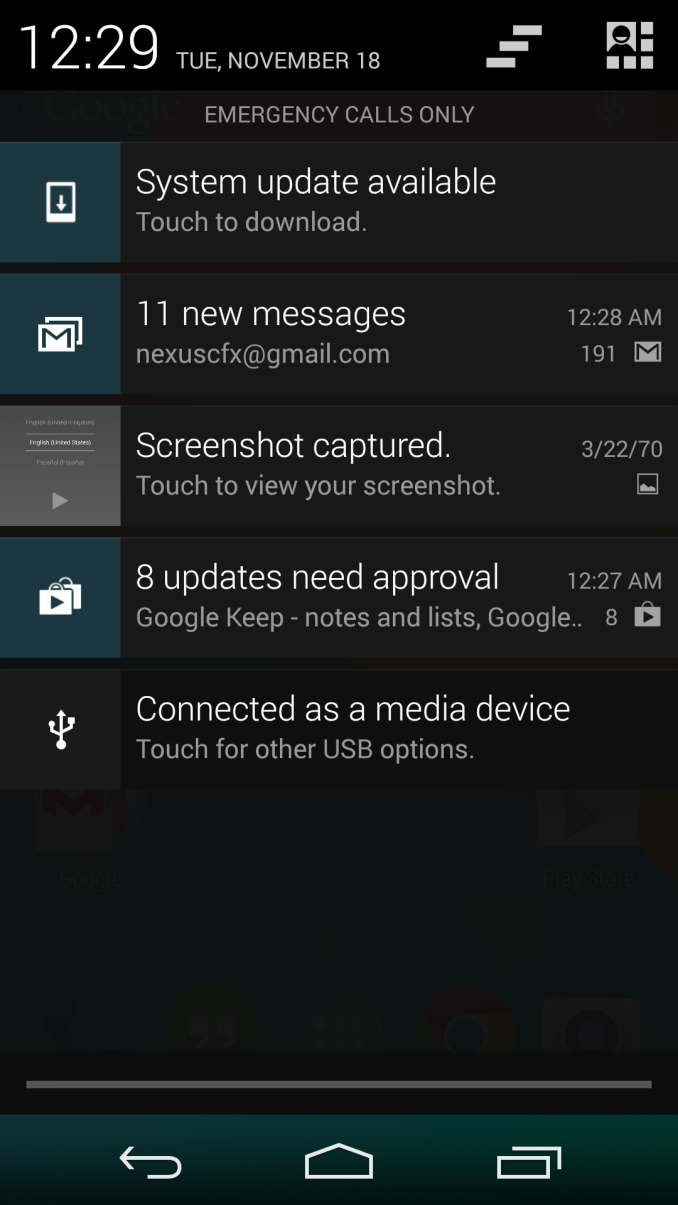
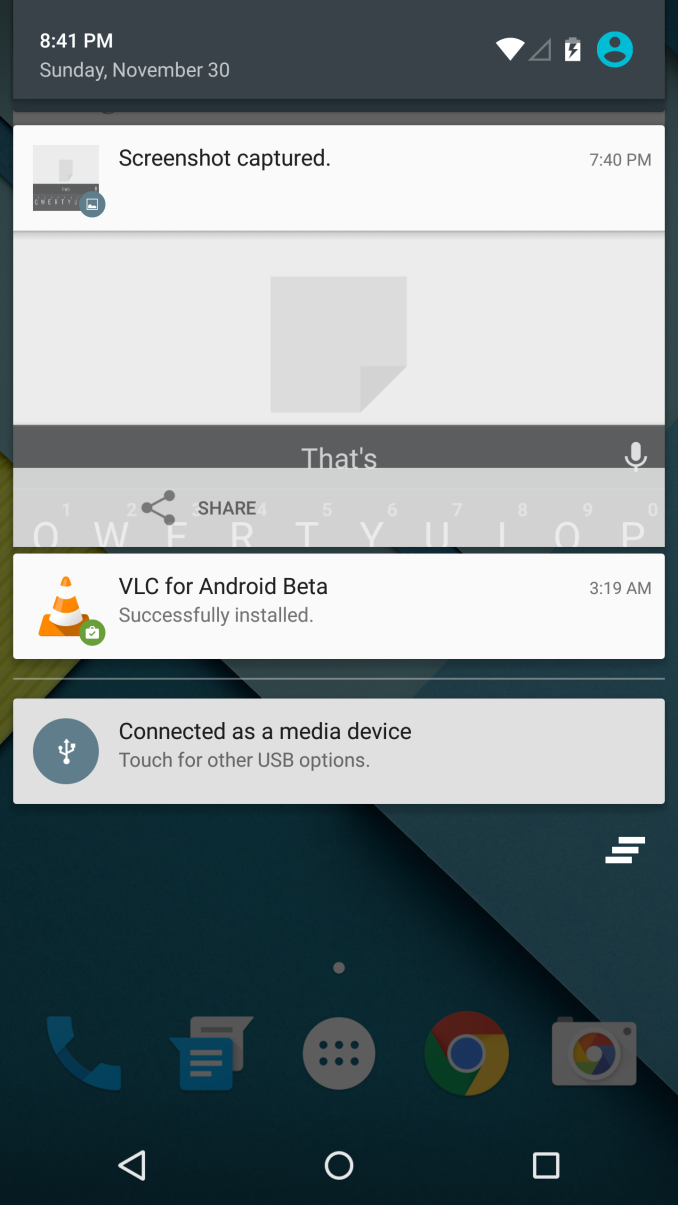
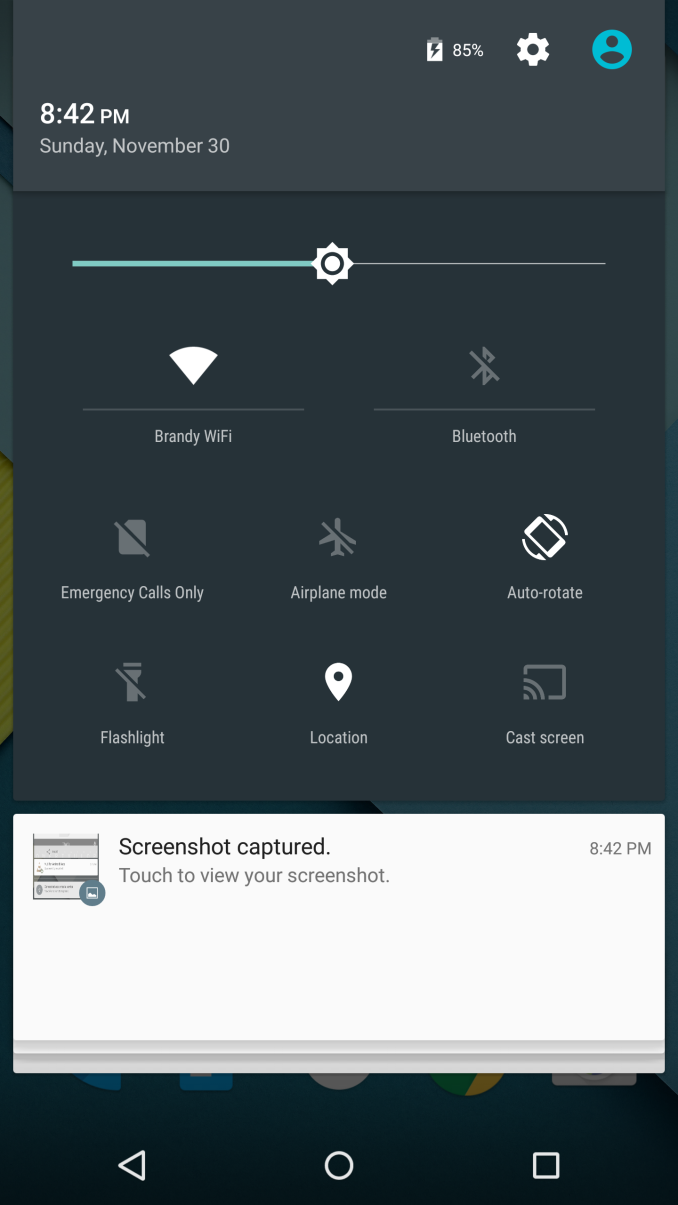
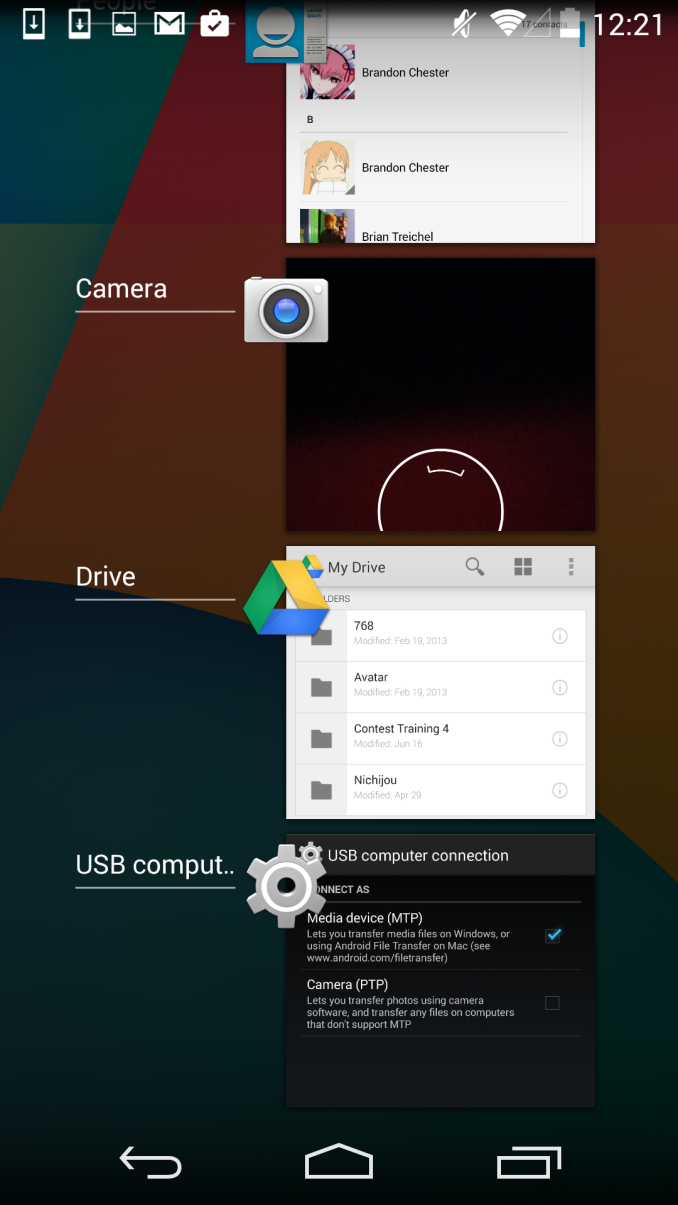
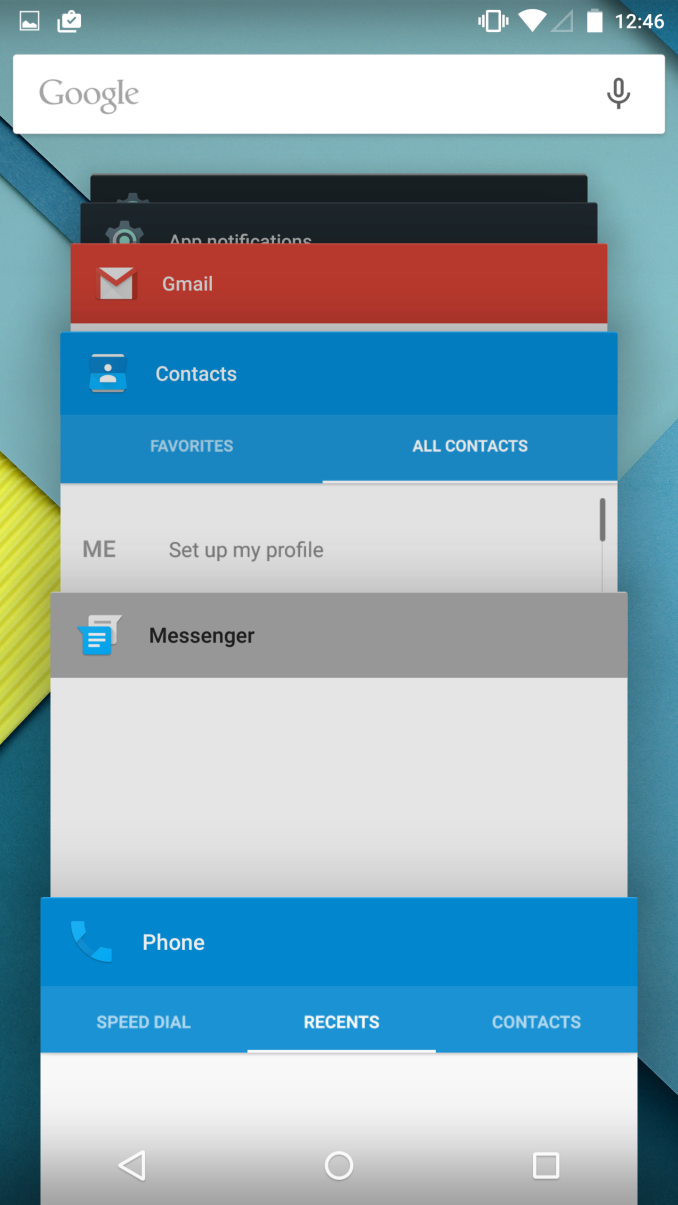








126 Comments
View All Comments
pgp - Friday, December 5, 2014 - link
After reading the whole review, I'd like to point two omissions I noticed:- Play Store and Calendar were named as the applications causing the most noticeable stutter during animations, but in my opinion Google Keep is far worse than the other two. In particular, scrolling always results in evident freezes of the UI, and even opening and closing notes is really painful.
- The new multitasking view doesn't just add the possibility to view Chrome tabs as separate apps, but this feature is extended to many other google apps; for example, tapping on the "new mail" button in Gmail brings you to a new application window, and opening Overview shows that actually the previous view is still open "underneath" the current one. That's pretty cool and really functional, in my opinion, because it gives you the opportunity to compare the mail you're writing with the ones in your inbox. Settings app also works similarly, but maybe it's a bit less useful.
Anyway, it's always a pleasure to read a review by Anandtech, they're always thorough and very pleasant :)
Ethos Evoss - Saturday, December 6, 2014 - link
i hate stock android .. horribl eicons horribl esymple two color layout.. horribl estatus bat icons .. settings black n white like in WW2 ..thnx good that manufs can have their own gui style of everything
insultar - Sunday, December 7, 2014 - link
I'm sorry but this an absolute horrible review. The reviewer has no clue about UI design. So please stop making reviews if you have no clue.Fidelator - Wednesday, December 10, 2014 - link
I can't imagine what's been going through the minds of the guys who work on the play store updates, for years they have continued to release stuttery, jittery terrible performing updates for what's possibly the most important app in all Androids, Google should be ashamed of keeping that trend up for so longrakesh_hocrox - Friday, December 12, 2014 - link
Check out the latest Android 5.0 Lollipop update for nexus : http://bit.ly/1vDxAwWMarkColby - Saturday, December 13, 2014 - link
Sounds like you think change is good just because it is change. That's fine, but some of us would prefer not to sacrifice functionality just to be fashionable. I couldn't give a bout of aerial coitus whether I add a contact via a floating button or a plus sign somewhere else, but if my SMS or email app is "improved" to use less screen real estate for actual text (causing me to see less context without having to scroll, despite the fact that devices are getting bigger with higher resolution screens so you could actually fit MORE and stay readable) that's not "moving on" - it's moving backwards. Same goes for changes to calendar or camera apps that completely remove features some of us use regularly. Almost everything I've heard about L makes me want to avoid it for as long as possible because I care what about my device DOES more than how it LOOKS. And yes, we are forced to upgrade eventually if we want the latest security patches or devices.